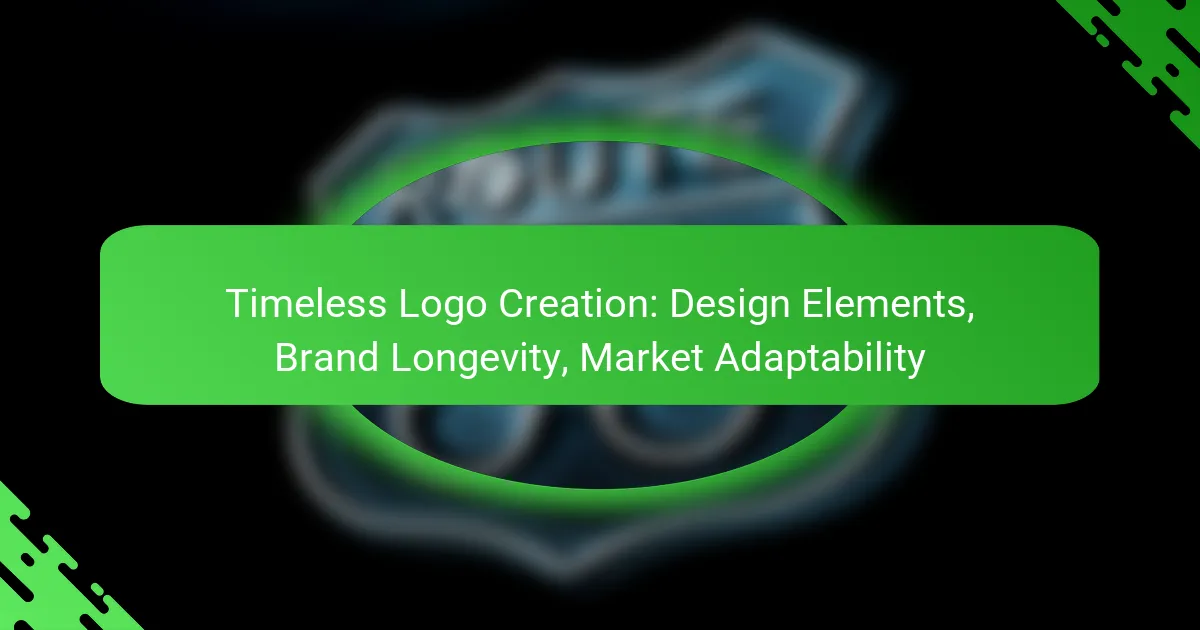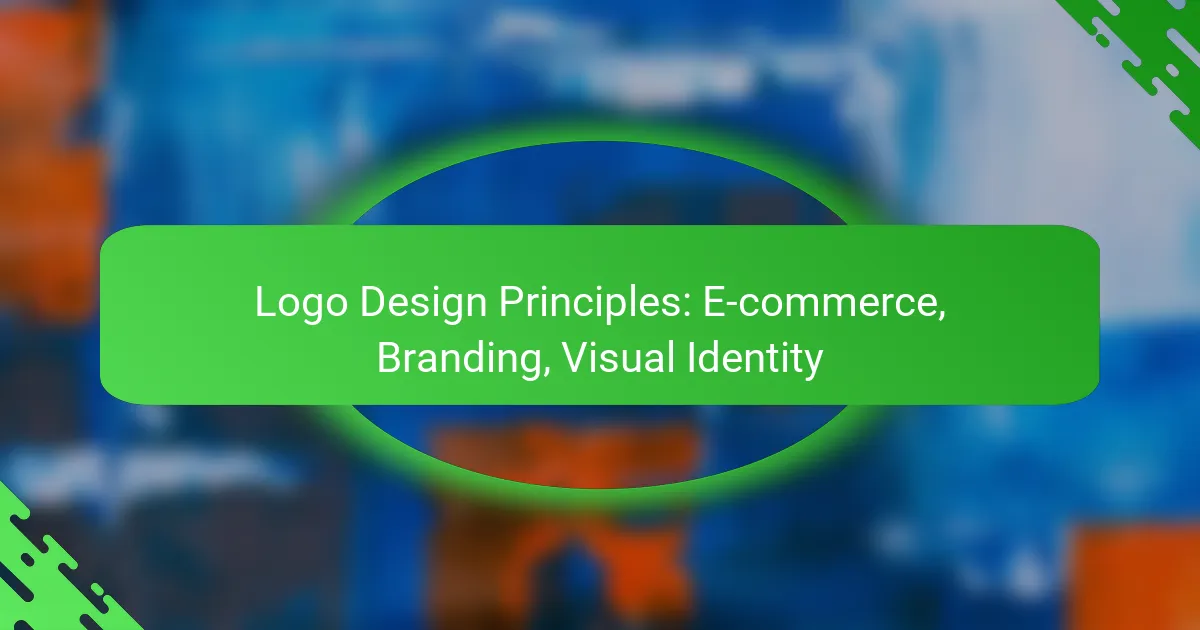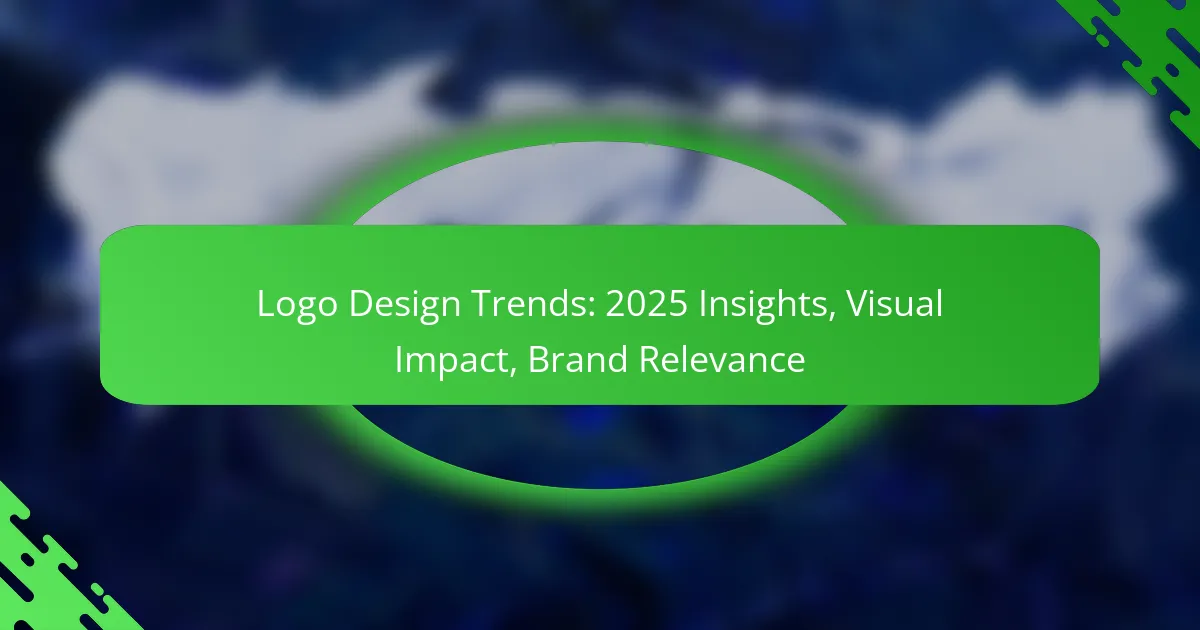Creating a timeless logo is essential for e-commerce brands, as it hinges on simplicity, meaningful symbols, and a classic color palette. By focusing on these design elements, brands can ensure their logos remain relevant and adaptable to evolving market trends. Additionally, incorporating consistent typography and iconic shapes fosters brand longevity and recognition, allowing the visual identity to thrive across various platforms and changing consumer preferences.
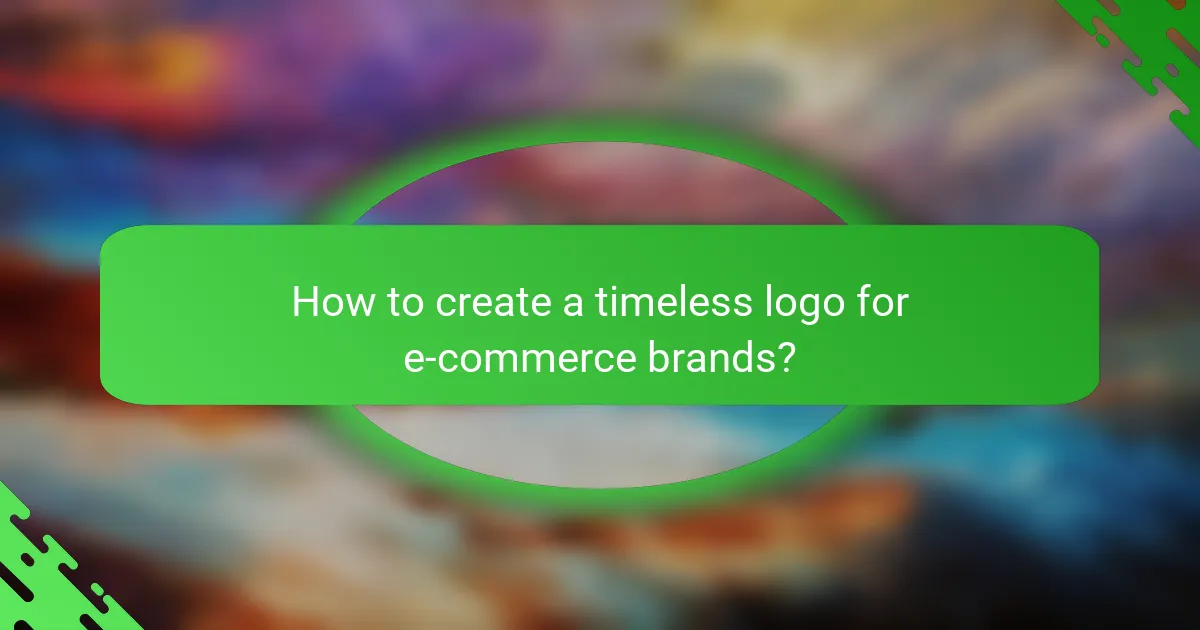
How to create a timeless logo for e-commerce brands?
Creating a timeless logo for e-commerce brands involves focusing on simplicity, meaningful symbols, a classic color palette, and scalability. These elements ensure that the logo remains relevant and adaptable as market trends evolve.
Focus on simplicity and versatility
A simple logo is easily recognizable and memorable, which is essential for brand recall. Aim for a design that can be understood at a glance, avoiding intricate details that may not translate well across different mediums.
Versatility is key; your logo should work well on various backgrounds and in different sizes. Test your design in both color and monochrome to ensure it maintains its impact regardless of the context.
Incorporate meaningful symbols
Using symbols that resonate with your brand’s values or mission can create a deeper connection with your audience. Consider elements that reflect your brand’s story or the products you offer, making the logo more relatable.
Ensure that the symbols are not overly complex; they should be easily understood and relevant to your target market. For instance, a tech brand might use abstract shapes that suggest innovation and progress.
Choose a timeless color palette
Select colors that evoke the right emotions and align with your brand identity. Classic colors like blue, black, and white tend to have lasting appeal, while trendy colors may quickly become outdated.
Limit your palette to two or three colors to maintain simplicity and coherence. This approach not only aids in brand recognition but also ensures that the logo remains adaptable across various marketing materials.
Ensure scalability for various formats
Your logo must be scalable to look great on everything from business cards to billboards. Use vector graphics to ensure that your logo maintains quality at any size.
Test the logo in different formats, such as digital and print, to confirm that it retains clarity and impact. A well-designed logo should be effective in both small and large formats, ensuring brand consistency across all platforms.

What design elements contribute to brand longevity?
Brand longevity is significantly influenced by design elements that create a lasting impression. Key factors include consistent typography, iconic shapes, and balanced composition, all of which help brands maintain relevance over time.
Consistent typography choices
Consistent typography is crucial for establishing a recognizable brand identity. Selecting a limited number of fonts—typically one or two—ensures that your brand communicates effectively across various platforms. Aim for legibility and versatility, choosing typefaces that can adapt to different sizes and contexts.
Consider using sans-serif fonts for modern brands and serif fonts for more traditional ones. A well-chosen typeface can evoke specific emotions and associations, reinforcing your brand’s message.
Iconic shapes and forms
Iconic shapes and forms are essential for creating a memorable logo that stands out. Simple geometric shapes often work best, as they are easily recognizable and versatile across different media. Think of brands like Apple or Nike, whose logos rely on minimalistic yet powerful designs.
When designing, consider how shapes can convey your brand’s values. For instance, circular logos can suggest unity and community, while angular shapes may imply strength and innovation.
Balanced composition and layout
A balanced composition ensures that all elements of your logo work harmoniously together. This involves considering the visual weight of each component and how they relate to one another. A well-composed logo is not only aesthetically pleasing but also functional across various applications.
Use the rule of thirds or grid systems to guide your layout decisions. This can help maintain balance and proportion, making your logo adaptable for both digital and print formats. Avoid overcrowding elements, as simplicity often leads to greater impact and easier recognition.
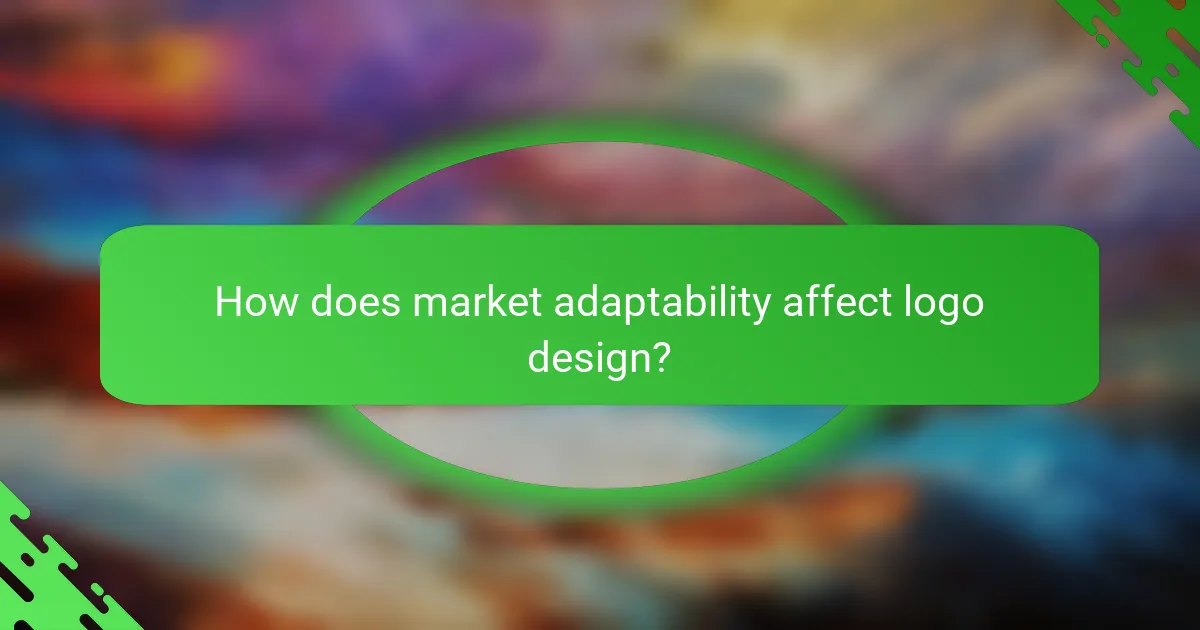
How does market adaptability affect logo design?
Market adaptability significantly influences logo design by ensuring that a brand’s visual identity remains relevant across various platforms and changing consumer preferences. A logo that can evolve with market trends while maintaining its core identity fosters brand longevity and recognition.
Responsive design for digital platforms
Responsive design is crucial for logos, especially as digital platforms become increasingly diverse. Logos should be scalable and adaptable to various screen sizes, from mobile devices to large displays. This adaptability ensures that the logo retains its clarity and impact regardless of the medium.
Consider creating multiple versions of your logo, such as a full logo for desktop use and a simplified icon for mobile applications. This approach helps maintain brand consistency while optimizing user experience across platforms.
Trends versus timelessness in design
Balancing trends and timelessness is essential in logo design. While incorporating current design trends can make a logo feel fresh, over-reliance on fleeting styles may lead to a quick obsolescence. Aim for a design that reflects contemporary aesthetics while ensuring it remains relevant for years.
A classic example is the Coca-Cola logo, which has maintained its core elements for decades while subtly evolving. Focus on fundamental design principles like simplicity and memorability to create a logo that withstands the test of time.
Flexibility for seasonal branding
Seasonal branding allows companies to adapt their logos for specific events or promotions without losing brand identity. This flexibility can enhance customer engagement and create a sense of relevance during holidays or special occasions.
For instance, a coffee shop might incorporate seasonal colors or elements into its logo during the winter holidays. However, ensure that any modifications are subtle and do not compromise the logo’s core identity, maintaining brand recognition throughout the year.

What are the key criteria for selecting a logo designer?
When selecting a logo designer, focus on their portfolio, understanding of your brand identity, and experience with e-commerce brands. These criteria ensure that the designer can create a logo that resonates with your target audience and stands the test of time.
Portfolio of past work
A designer’s portfolio showcases their style and capabilities. Look for a diverse range of projects that demonstrate creativity and versatility, particularly in industries similar to yours. Pay attention to the quality of the logos and whether they align with current design trends while maintaining a timeless appeal.
Evaluate how well the logos communicate the brand’s message. A strong portfolio should include case studies that explain the design process and the rationale behind each logo, providing insight into the designer’s strategic thinking.
Understanding of brand identity
It’s crucial that the designer comprehends your brand’s core values, mission, and target audience. A logo should encapsulate the essence of your brand, making it instantly recognizable and relatable. During initial discussions, assess how well the designer asks questions and engages with your brand story.
Consider their approach to brand identity. A good designer will not only create a logo but will also offer insights on how it fits within your overall branding strategy, including color schemes, typography, and usage across different platforms.
Experience with e-commerce brands
Experience with e-commerce brands is vital, especially if your business operates online. Designers familiar with e-commerce understand the importance of scalability and adaptability of logos across various digital platforms. They can create logos that work well on websites, social media, and mobile apps.
Look for designers who have successfully worked with e-commerce clients and can provide examples of logos that have contributed to brand recognition and sales. This experience can help ensure your logo is not only visually appealing but also effective in driving customer engagement and conversions.
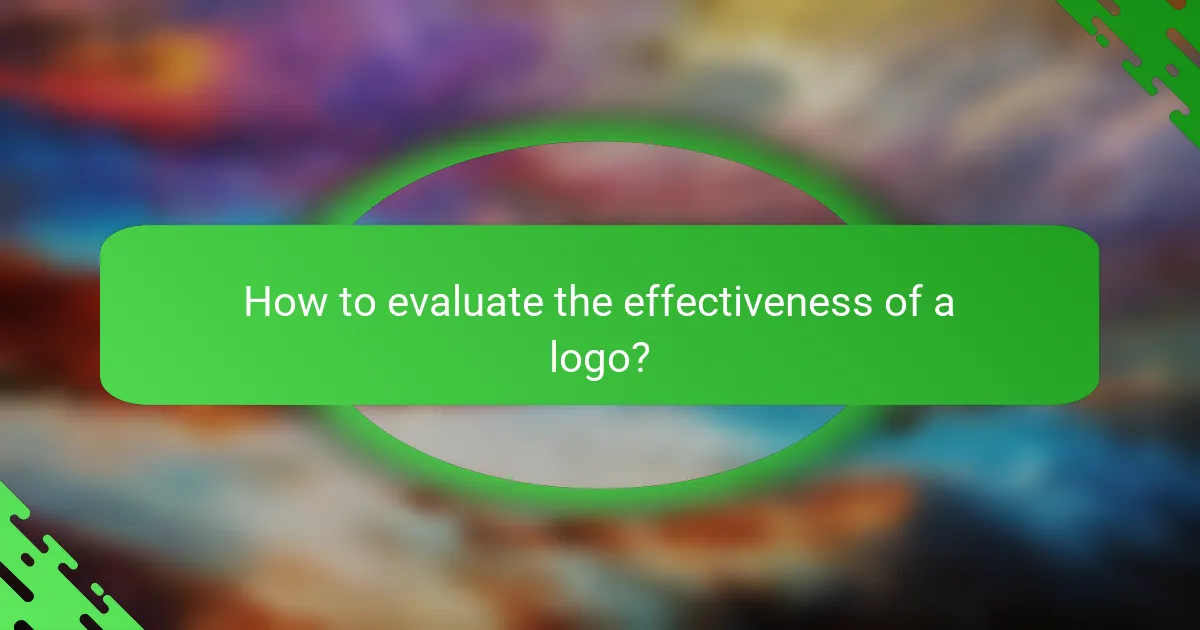
How to evaluate the effectiveness of a logo?
To evaluate the effectiveness of a logo, consider its ability to enhance brand recognition, resonate with consumers, and perform well in the market. A successful logo should be memorable, adaptable, and reflective of the brand’s identity.
Brand recognition metrics
Brand recognition metrics assess how well consumers can identify a brand based on its logo. Key indicators include recall rates, recognition scores, and visual appeal ratings. Surveys often reveal that logos with simple designs and distinct colors tend to score higher in brand recognition.
To measure these metrics, consider conducting A/B testing with different logo designs and tracking consumer responses. Aim for a recall rate of at least 60% for a logo to be deemed effective in your target market.
Consumer feedback and surveys
Gathering consumer feedback through surveys is crucial for understanding how a logo is perceived. Questions should focus on clarity, relevance, and emotional response to the logo. Utilize both qualitative and quantitative methods to get a comprehensive view.
Online platforms can facilitate quick surveys, allowing you to gather insights from a diverse audience. Aim for a sample size of at least 100 respondents to ensure reliable data, and look for trends in feedback that highlight strengths and weaknesses of the logo.
Market performance analysis
Market performance analysis examines how a logo influences sales and brand loyalty. Track metrics such as sales growth, customer retention rates, and market share before and after a logo change. A positive correlation between logo updates and improved performance can indicate effectiveness.
Consider comparing your logo’s performance against competitors to gauge its impact. If your logo aligns with industry trends and resonates with your target demographic, it can significantly enhance your market presence.
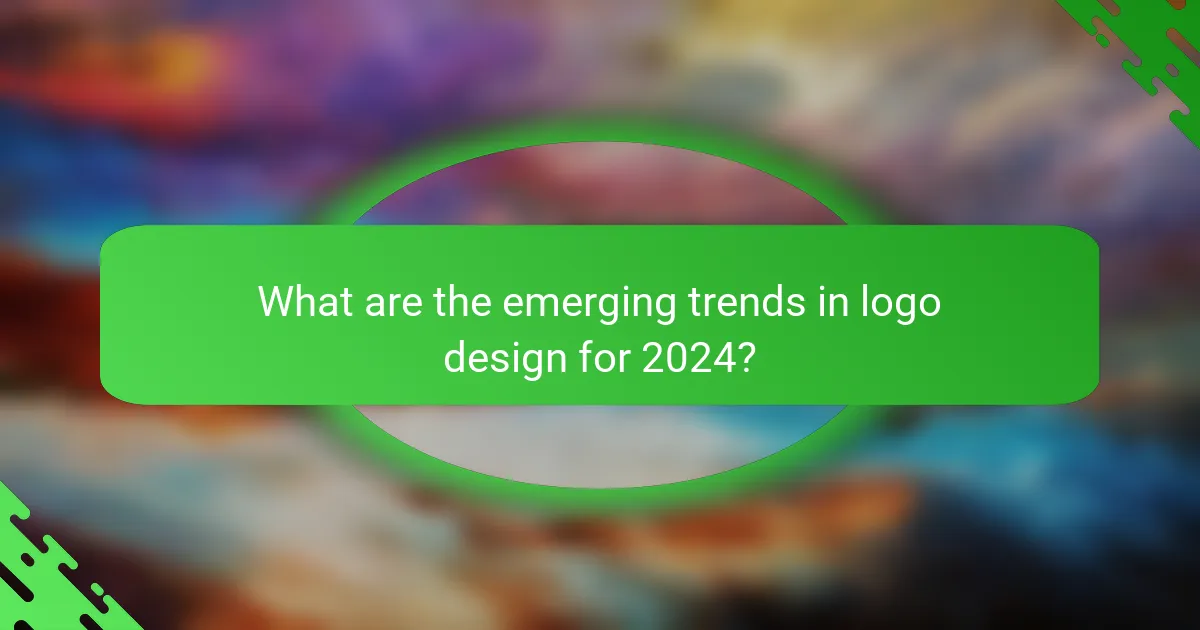
What are the emerging trends in logo design for 2024?
In 2024, logo design trends are increasingly focused on minimalism, sustainability, and adaptability to digital platforms. Brands are prioritizing designs that are not only visually appealing but also resonate with eco-conscious consumers and can easily transition across various media.
Use of AI in logo creation
AI is revolutionizing logo creation by enabling designers to generate unique concepts quickly and efficiently. Tools powered by artificial intelligence can analyze existing logos, identify trends, and suggest designs that align with a brand’s identity.
When using AI for logo design, consider the balance between automation and human creativity. While AI can produce numerous iterations, the final design should reflect the brand’s values and resonate with its target audience. It’s essential to review AI-generated options critically and refine them to ensure they meet your specific needs.
Common pitfalls include over-reliance on AI tools, which may lead to generic designs. Aim for a blend of AI efficiency and personal touch to create a logo that stands out and endures over time. Test your designs across different platforms to ensure versatility and clarity in various contexts.
